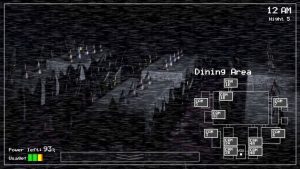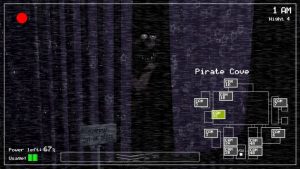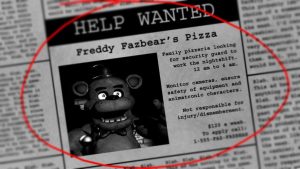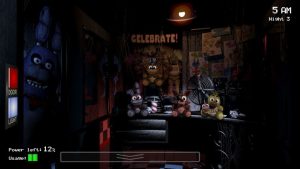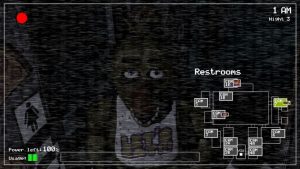Five Nights at Freddy’s (FNAF) is a groundbreaking indie horror game developed by Scott Cawthon and released in 2014. In the vast realm of gaming, few titles have managed to captivate players and create a cultural phenomenon like FNAF. The game quickly rose to fame, garnering a massive and dedicated fan base that continues to grow.
The Setting and Gameplay: At its core, FNAF is a survival horror game set in a seemingly innocent place: Freddy Fazbear’s Pizza, a family-friendly restaurant featuring animatronic characters meant to entertain kids during the day. However, as darkness falls, an eerie and unsettling atmosphere takes over. Players assume the role of a night security guard, tasked with monitoring the restaurant’s security cameras and keeping an eye on the animatronics.
The gameplay is a mix of strategy, suspense, and jump scares. The central mechanics revolve around limited resources and time management, creating an intense and nerve-wracking experience. Players must efficiently manage their power supply to operate the security cameras and electronic doors while trying to survive a series of nights, each progressively more challenging than the last.
Primal Fears and Uncanny Valley Effect: One of the key factors contributing to FNAF‘s popularity is its ability to tap into primal fears. The animatronic characters, designed to be cute and charming during the day, transform into sinister and malevolent creatures at night. This stark contrast creates psychological tension, triggering a fear of the unknown and a sense of vulnerability. FNAF cleverly exploits the uncanny valley phenomenon, where human-like objects that look almost real—but not quite—can evoke discomfort and fear in people.
Mysterious Lore and Community Engagement: FNAF‘s narrative is shrouded in mystery, intrigue, and symbolism, encouraging players to unravel its secrets and piece together the underlying story. This element of hidden lore has led to countless fan theories, fostering a strong sense of community engagement and long-term commitment to the game. The mysterious backstory of the animatronics and the eerie events surrounding Freddy Fazbear’s Pizza have become a central part of the game’s enduring appeal.
Cognitive and Emotional Benefits: Beyond its sheer entertainment value, FNAF offers several cognitive and emotional benefits. The game demands strategic thinking, problem-solving, and quick decision-making under pressure. Players must develop a deep understanding of the animatronics’ behaviors and patterns, honing their observational skills and critical thinking.
Additionally, overcoming fear and anxiety within a controlled environment like a video game can have therapeutic effects for some players. FNAF allows individuals to confront their fears in a safe space, gradually desensitizing them and providing a sense of achievement when they successfully survive each night.
A Horror Masterpiece with Lasting Impact: Five Nights at Freddy’s is more than just a horror game; it’s a cultural phenomenon that redefined the survival horror genre. Its blend of psychological horror, strategic gameplay, and deep lore has kept players engaged for years, making it a classic in the world of gaming. With its unsettling atmosphere, thrilling gameplay, and mysterious backstory, FNAF continues to be a beloved title for horror enthusiasts and gamers alike.
Anúncios

Five Nights at Freddy’s
Anúncios
Plataforma:
AndroidIOS
Versão:
2.0.3
Atualização:
maio 15, 2025
Tamanho:
85.3 MB
Categoria:
AventuraPuzzle
Preço:
---
Descrição do Jogo
Anúncios
Sem vírus, sem malware!
Os jogos no site Finder Games são obtidos da App Store e do Google Play. Sem vírus, sem malware, você pode baixá-los através dos links de download recomendados.

